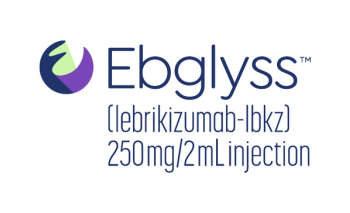
Predict drug adherence or pay more in future costs
Pharmacists are an underutilized resource in the effort to keep members adherent
The National Community Pharmacists Assn. (NCPA) recently awarded a “C+” grade to the United States for drug adherence rates in its First National Report Card. About 15% of Americans were found to be largely non-adherent to prescribed drug therapy regimens.
Costs resulting from improper and unnecessary use of medicine exceeded $200 billion in 2012, equal to 8% of the nation’s healthcare spending during that year, according to the IMS Institute for Healthcare Informatics. That is enough to pay for healthcare for 24 million people.
NCPA surveyed American adults 40 years and older, who had been prescribed medication for a chronic condition. This population represents 30% of all adults, whose median age is 60 years and takes an average of four prescriptions apiece.
In evaluating adherence levels, NCPA found that 24% earned an A grade for being completely adherent; another 24% were largely adherent for a B grade; 20% earned a C grade; 16% earned a D; and the remaining 15% received an F for being largely non-adherent.
“There is no doubt that medication adherence is a major concern-there have been 40,000 articles written on the subject in the past 40 years. We decided to try a more mainstream approach and provide an easy-to-understand, annual assessment of people’s behaviors and attitudes toward taking medication,” says Jennifer Bruckart, director, program outreach and special projects for NCPA.
The NCPA report identifies six key predictors of medication adherence in order of magnitude:
- Patients’ personal connection with a pharmacist;
- Medication affordability;
- Level of continuity of entire healthcare services;
- Importance to patient of taking medication exactly as prescribed;
- How well informed patients feel about their health; and
- Degree of side effects.
The predictors have suggested a variety of ways for healthcare providers and pharmacists to target non-adherence.
“As an organization, we encourage connectivity between patients and their pharmacists-an underutilized resource-and other providers not just for the oldest and sickest populations, but across all ages and socioeconomic groups,” Bruckart says.
She suggests that those who have been recently diagnosed with a condition are most in need of attention.
Besides communication, NCPA advocates for better educating patients about the importance of adherence and encouraging patients to discuss side effects with their providers. Determining why patients are not taking their medications can help eliminate gaps in therapy.
Savings realized
The Congressional Budget Office estimates that a 1% increase in the number of prescriptions filled by Medicare beneficiaries would cause Medicare spending on medical services to drop by approximately 0.2% resulting in $1.7 billion in savings.
To address non-adherence, two years ago NCPA launched
About a week prior to a time selected as an appointment day, pharmacies in the program call their patients to identify any changes in medications or dosages based on recent hospitalizations or on health status. A few days later, the pharmacies fill all prescriptions and address any refill authorizations, and on the appointed day, patients pick up that month’s complete regimen of medications.
Pharmacist John Sykora created the model for Simplify My Meds 15 years ago. He calls his program at Abrams and Clark, a pharmacy in Long Beach, Calif., the “Personal Service Program,” which he says he started to leverage with managed care. He shared the idea with NCPA, and the national program began.
Sykora says when managed care organizations first started to pay for chronic-condition supplies, for a diabetes patient for example, they would authorize them for only one month at a time. The patient had to reapply for authorization every month. And approval could take days.
“We decided to anticipate needs and call patients about seven days before they ran out of supplies to start the authorization process,” Sykora says. “ We did not automatically refill the order but made direct contact with the patient each month.”
Managed care organizations that he worked with eventually changed the policy and authorizations now encompass several months rather than one month at a time.
Sykora wrapped the model around drugs and now calls patients seven days in advance to resolve payment issues, identify any changes in medications and discuss any gaps in therapy before they come into the pharmacy.
“We have become a proactive business instead of a reactive one,” Sykora says.
Currently about 350 patients take advantage of the Personal Service Program.
Sykora says that from a business standpoint, he has become more efficient and is able to set his own hours because he knows when his customers need their medications refilled, in addition to decreasing phone calls and deliveries.
“We order to fill a prescription, not to fill inventory,” he says.
Instead of turning inventory 12 times a year (the annual rate of prescription inventory turnover is 11.7 times according to NCPA), the pharmacy turns it 36 times.
And there’s a business case across the system to evolve the logistics of pharmacy practice.
“Unless pharmacies change the way they do business, we will not be able to resolve hospital readmissions often caused by non-adherence,” Sykora says.
NCPA supports a five-year advocacy
A new law that goes into effect in 2014 requires Part D plans to apply a daily cost sharing rate for prescriptions for less than a 30-day supply. In other words, beneficiaries would not pay a full copay for a “trial” fill that is less than a typical full-month supply. NCPA believes the legislation would increase enrollment in a medication synchronization program.
Thrifty White, a chain with more than 80 locations in the rural Midwest, engages offers its Med Sync program. The chain tracked patients over a year who were on at least two chronic-condition medicines within six drug classes.
Depending on the drug class, patients in the program had 3.4 to 6.1 times greater odds of adherence than the control group, whose patients had a 52% to 73% greater chance of becoming non-persistent, as reported in the IMS study.
Medication Therapy Management
In conjunction with the University of Maryland and the Pharmaceutical Research and Manufacturers of America, the National Association of Chain Drug Stores (NACDS) sponsored a recent study. It researched medication therapy management (MTM) by assessing potential Medicare savings from improved adherence.
Medicare requires insurers offering Part D plans to provide MTM services to beneficiaries with multiple chronic conditions and high drug costs and who are using multiple medications.
The research, reported in the July 2013 issue of Health Affairs, analyzed claims data from 2006 to 2008 from patients with diabetes, heart failure and chronic obstructive pulmonary disease enrolled in a Medicare Part D program. Findings show that beneficiaries with poor adherence had additional medical and hospital costs resulting in unnecessary spending in Medicare Parts A and B, ranging from $49 to $840 a month. However, those patients were no more likely than others to be eligible for MTM.
“We found inconsistences in the beneficiaries targeted for MTM,” says Laura Miller, senior economist for NACDS and co-author of the study. “While it is up to the plan to decide how to implement MTM, the program should target beneficiaries by condition, not just by [CMS criteria]. There are beneficiaries who are not targeted by MTM who could benefit from the services.”
Miller says that the combination effect of non-adherence on costs and MTM eligibility produced a new metric: potentially avoidable future costs.
NACDS is a proponent of two companion bills in the U.S. House and Senate, both called the Medication Therapy Management Empowerment Act of 2013, which would allow Medicare beneficiaries with a single chronic disease to qualify for MTM services. However, the bills specify that overall costs to Medicare cannot increase over the following five-year period.
States and Adherence
CVS Caremark studied potential cost savings within each state by examining medication adherence rates for diabetes, hypertension, high cholesterol and depression. Its "State of the States: Adherence Report" is designed to provide a snapshot, says Troyen Brennan, MD, chief medical officer of CVS Caremark, a pharmacy benefits manager.
The savings among states range from $19 million to $2.1 billion, according to the report. Texas stands to save the most-$686 million-through better medication adherence, followed by California at $652 million.
For the first time, the report considers adherence by market segments-health plans, employer-sponsored plans and Medicare prescription drug plans (PDPs). Maryland has the highest overall medication possession ratio (MPR) of 81.9% in the health plan sector; Vermont tops the list for employers (84.7%); and Maine heads the PDP group (86.3%).
Newsletter
Get the latest industry news, event updates, and more from Managed healthcare Executive.






















































